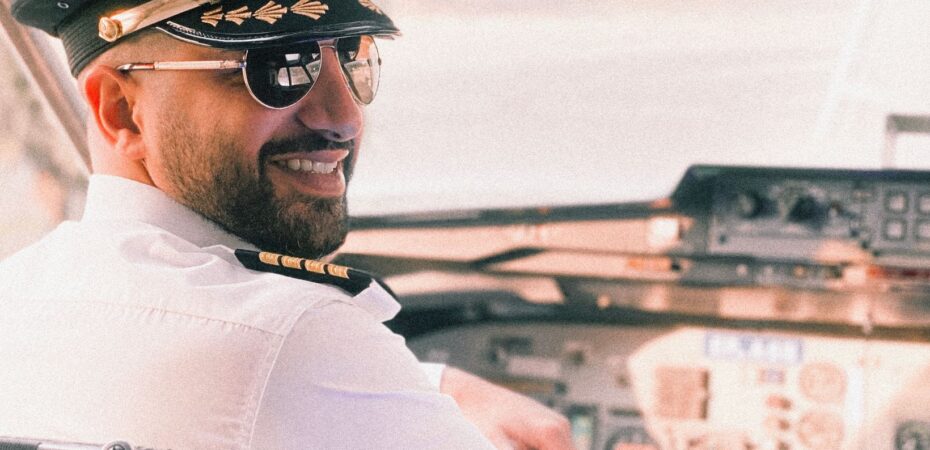If you’re an aviator, then choosing the right pair of sunglasses is way more than a fashion choice: you’ll need to consider advanced UVA and UVB protection and the lenses that’ll be best able to cut through glare and allow you to clearly see the instruments and written materials in the cockpit not to mention the glasses that’ll protect your eyes from events such as bird strikes, flying debris, or aerobatic maneuvers. But it doesn’t need to be a challenge – below are all the details you need to select the best pair of shades for your aeronautical escapades.
UVA and UVB Protection
For pilots, the most important consideration needs to be the level of protection a pair of sunglasses provides against UVA and UVB radiation: UV radiation increases by around 5% for every 1,000 feet of altitude gained. As well as a range of eye conditions, this type of radiation can also cause sunburn and skin cancers affecting the skin around the eye. Sunglasses that offer 100% UVA and UVB protection are essential.
Choosing Lens Material
The most common lens materials are crown glass, monomer plastic, and polycarbonate. The latter is the strongest and lightest and tends to have built-in UV protection and a scratch-resistant coating.

Lenses made from monomer plastic are also strong and relatively light; they tint easily, meaning that prescription clear glasses can be transformed into sunglasses. Crown glass is very scratch-resistant and provides excellent optical quality, but it is the heaviest of the options and the least impact resistant.
Consider the Tint Type
Aviators have a near-endless choice of tints to choose from for their sunglasses – the most common are brown, gray, and gray-green. For pilots, each of these three options has some great benefits. Although gray is a popular choice for pilots as it distorts color the least, many pilots opt for brown or gray-green tints as these can enhance vividness and enhance contrast in hazy conditions.
For flying, sunglasses should filter out only about 70-85% of visible light, and they shouldn’t distort color. To this end, pilots should avoid tints that block out more than 85% of visible light. Otherwise, there’s the risk that the pilot may have difficulty seeing written materials and instruments within the cockpit.
To Polarize or Not to Polarize?
No matter what the movies may suggest, polarized lenses aren’t recommended for pilots. This is because they can eliminate or reduce the visibility of instruments that have anti-glare filters. Polarized lenses can also interfere with how well a pilot can see through the aircraft windscreen as they enhance the striations inherent in laminated materials and mask light that reflects off a shiny surface. This means that the time in which a pilot has to react to avoid hitting something could be reduced.
Similarly, photochromic lenses are not recommended due to the possible visual disturbance they can cause in connection with cockpit displays and the ability to spot other aircraft.
The Frames
Finally – the frames. Although a large degree of personal style and preferences will come into play regarding this choice, there are some things that pilots should bear in mind to identify the most suitable option. For example, small frames are usually best avoided, as they can allow too much light and UV/UVB radiation exposure. It’s vital to ensure that the frames fit securely, too, so that any sudden movements or turbulence don’t cause them to be dislodged. In the case of prescription sunglasses, the use of a strap is highly recommended.
How About Ray-Ban Aviator Sunglasses?
Well, this option could actually be a good choice. The Aviator model was developed by Bausch and Lomb in the 1930s specifically for US air force personnel. They replaced the clunky flight goggles that had been used until this point and proved to be both a highly functional and stylish choice – they were soon given the name Ray-Bans – and the rest is history!

Ray-Ban Aviators are still a great choice for pilots. As well as offering great coverage, the perfect amount of tint, and a robust frame, they carry a weighty cultural currency: during World War II, General Douglas MacArthur was photographed sporting a pair of Aviators after landing on a beach in the Philippines. Immediately, the model became synonymous with heroic endeavors and military accomplishments.
Aviator Alternatives for Pilots
A classic pair of Ray-Ban Aviators isn’t quite your style? No problem; there are plenty of alternatives for pilots. The Randolph Aviators were also designed for the US military and have been standard issues since 1982 and have been tested to ultra-rigorous standards – as such, they’re widely worn by pilots today.
Or how about the Oakley Crosshair Aviator Sunglasses? These shades offer superior peripheral vision due to their extensive side coverage and have been tuned to enhance optical clarity. And then there’s the Serengeti Summit Drivers – specifically designed for flying and driving; this choice delivers a single-gradient lens to give a crystal clear view of the instrument panel.
Sunglasses for Pilots: The Takeaway
If you’re a pilot, picking the right pair of sunglasses is about much more than finding the most stylish shades with the best fit. While – of course – these things will play a part, there are other vital things to consider, such as the level of tint, the types of frame, and the lens coating required. While it may take a little longer to identify the perfect pair of sunglasses, doing so will mean smoother flights, better-protected eyes, and plenty of happy landings!


 By
By 



